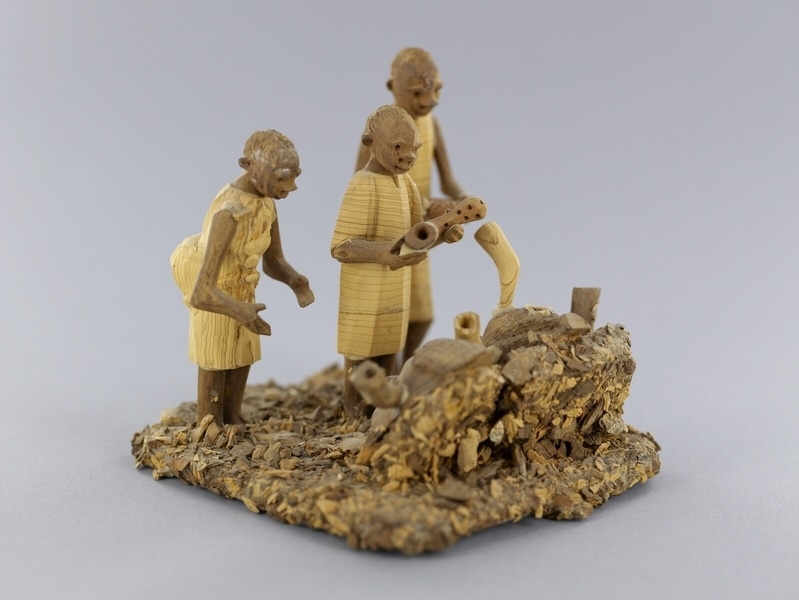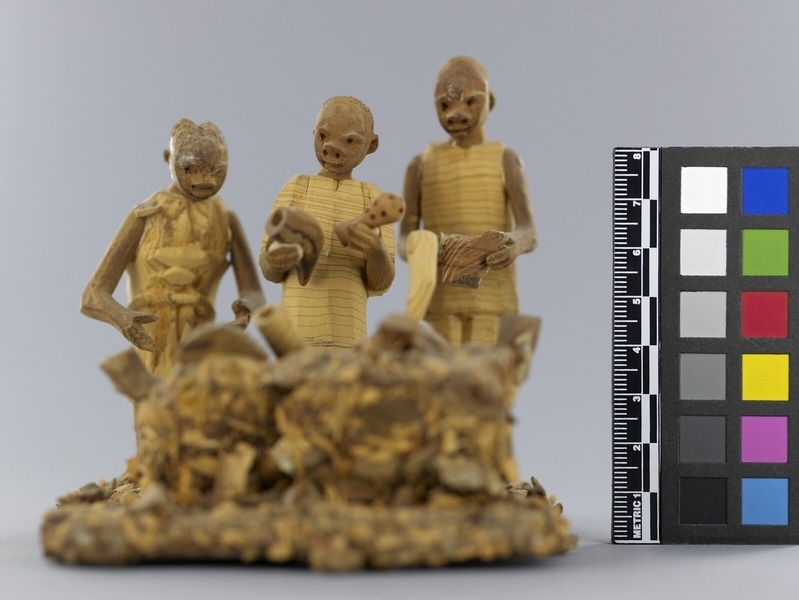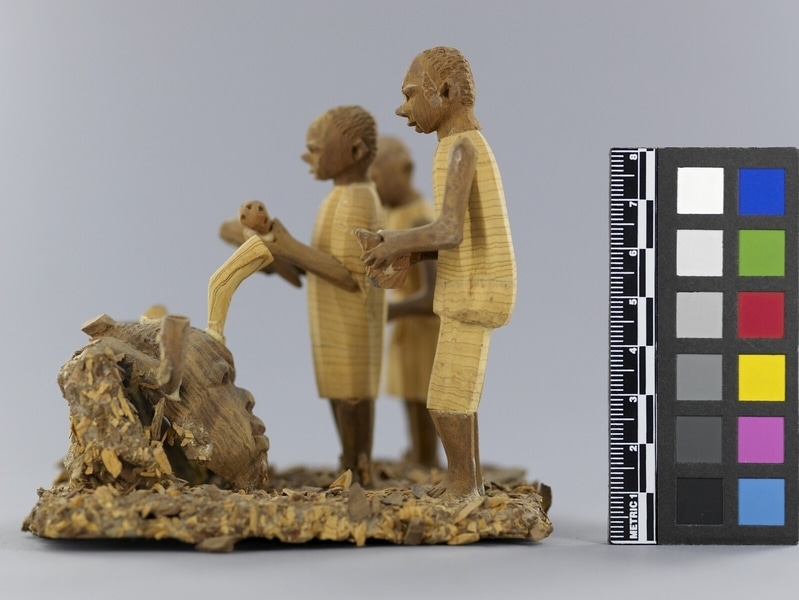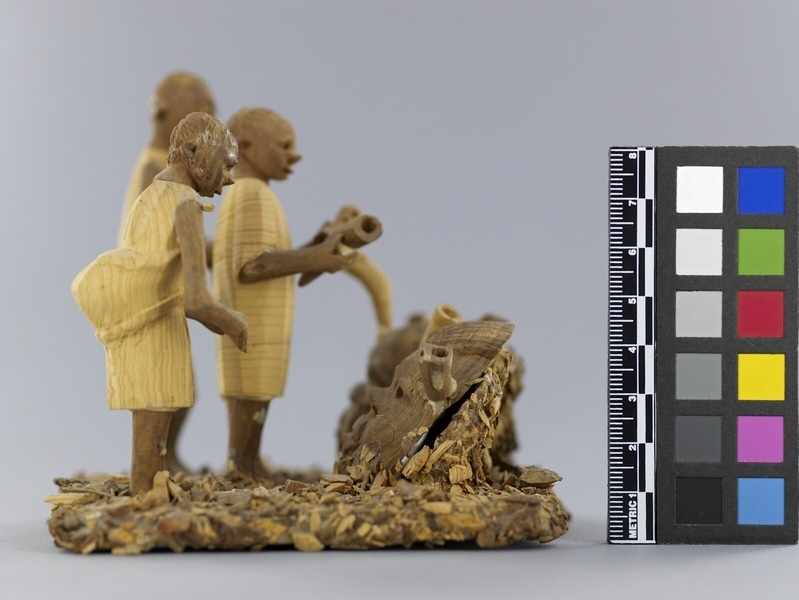Thorn Carving Item Number: Af371 from the MOA: University of British Columbia




Description
Three figures representing people standing in front of two mask-like heads which are resting against a low wall-like support. One mask has a horn protruding from the side of the head and the other has two horns. The centre figure is holding a horn in its right hand and a perforated cylinder in its left, and she is wearing a short-sleeved dress. The woman on her right has her arms outstretched towards the masks, and she is wearing a sling around her waist over a sleeveless dress. The man on her left is holding a chicken, and he is wearing a sleeveless tunic and short pants. The heads, arms, legs, masks and three horns are dark brown. The chicken and perforated object are light red-brown. The clothing and two horn containers are light yellow-brown. Carvings are set on a platform covered with thorn tree chips.
History Of Use
Thorn carvings are miniatures depicting scenes from Nigerian life. This type of carving began circa 1930. Thorns vary in size. They can be as large as 12.7 cm. long and 9.6 cm. wide. They are comparatively soft and easily carved. The light yellow-brown thorn and the dark brown thorn come from the Ata tree; the light red-brown thorn comes from Egun trees. The parts are glued together with viscous paste made from rice cooked with water. They are carved by men.
Cultural Context
craft; tourist art
Item History
- Made in Nigeria before 1972
- Collected during 1972
- Owned by Andrew Stewart and Jessie Stewart before February 8, 1980
- Received from Andrew Stewart (Donor) and Jessie Stewart (Donor) on February 8, 1980
What
- Name
- Thorn Carving
- Identification Number
- Af371
- Type of Item
- carving
- Material
- atum thorn, rice adhesive, stain, wood and egun thorn
- Manufacturing Technique
- carved and glued
- Overall
- height 10.0 cm, width 10.0 cm, depth 10.5 cm
Who
- Culture
- Yoruba
- Previous Owner
- Andrew Stewart and Jessie Stewart
- Received from
- Andrew Stewart (Donor) and Jessie Stewart (Donor)
Where
- Holding Institution
- MOA: University of British Columbia
- Made in
- Nigeria
When
- Creation Date
- before 1972
- Collection Date
- during 1972
- Ownership Date
- before February 8, 1980
- Acquisition Date
- on February 8, 1980
Other
- Item Classes
- carvings & sculpture
- Condition
- good
- Accession Number
- 0590/0057